
NGC 351 is a spiral galaxy in the constellation Cetus. It was discovered on November 10, 1885 by Lewis Swift. It was described by Dreyer as "extremely faint, pretty small, northwestern of 2.", the other being NGC 353.
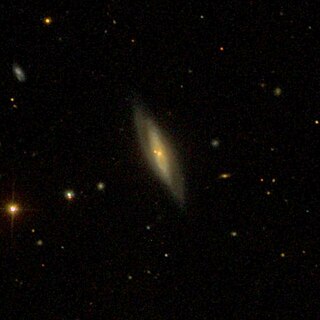
NGC 353 is a spiral galaxy in the constellation Cetus. It was discovered on November 10, 1885 by Lewis Swift. It was described by Dreyer as "extremely faint, pretty small, round, southeastern of 2.", the other being NGC 351.
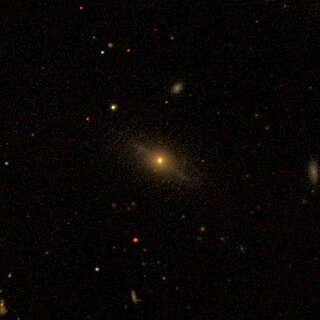
NGC 355 is a lenticular galaxy in the constellation Cetus. It was discovered on September 27, 1864 by Albert Marth. It was described by Dreyer as "extremely faint, very small."

NGC 356 is a spiral galaxy in the constellation Cetus. It was discovered on September 27, 1864 by Albert Marth. It was described by Dreyer as "very faint, small, irregularly round."

NGC 364 is a barred lenticular galaxy in the constellation Cetus. It was discovered on September 2, 1864, by Albert Marth. It was described by Dreyer as "very faint, very small."

NGC 366 is an open cluster located in the constellation Cassiopeia. It was discovered on October 27, 1829, by John Herschel. It was described by Dreyer as a "cluster, small."

NGC 367 is a spiral galaxy in the constellation of Cetus. It was discovered in 1886 by the astronomer Frank Muller.

NGC 368 is a lenticular galaxy in the constellation of Phoenix. It was discovered by John Herschel on September 5, 1834.

NGC 373 is an elliptical galaxy located in the constellation Pisces. It was discovered on December 12, 1876 by John Louis Emil Dreyer. It was described by Dreyer as "very faint, very small."

NGC 374 is a spiral or lenticular galaxy located in the constellation Pisces. It was discovered on October 7, 1861, by Heinrich d'Arrest. It was described by Dreyer as "faint, small, between two 15th magnitude stars."

NGC 375 is an elliptical galaxy located in the constellation Pisces. It was discovered on September 12, 1784 by William Herschel. It was described by Dreyer as "pretty faint, small, round, brighter middle." Along with galaxies NGC 379, NGC 380, NGC 382, NGC 383, NGC 384, NGC 385, NGC 386, NGC 387 and NGC 388, NGC 375 forms a galaxy cluster called Arp 331.

NGC 380 is an elliptical galaxy located in the constellation Pisces. It was discovered on September 12, 1784 by William Herschel. It was described by Dreyer as "pretty faint, small, round, suddenly brighter middle." Along with galaxies NGC 375, NGC 379, NGC 382, NGC 383, NGC 384, NGC 385, NGC 386, NGC 387 and NGC 388, NGC 380 forms a galaxy cluster called Arp 331.

NGC 384 is an elliptical galaxy located in the constellation Pisces. It was discovered on November 4, 1850, by Bindon Stoney. It was described by Dreyer as "pretty faint, pretty small, southwestern of 2.", the other being NGC 385. Along with galaxies NGC 375, NGC 379, NGC 382, NGC 383, NGC 385, NGC 386, NGC 387 and NGC 388, NGC 384 forms a galaxy cluster called Arp 331.
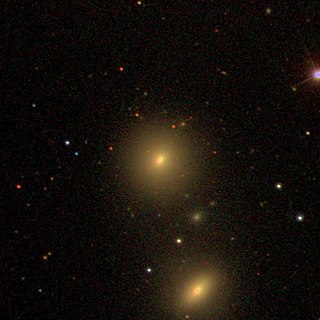
NGC 385 is an unbarred lenticular galaxy located in the constellation Pisces. It was discovered on November 4, 1850, by Bindon Stoney. It was described by Dreyer as "pretty faint, pretty small, round, northeastern of 2.", the other being NGC 384. Along with galaxies NGC 375, NGC 379, NGC 382, NGC 383, NGC 384, NGC 386, NGC 387 and NGC 388, NGC 385 forms a galaxy cluster called Arp 331.
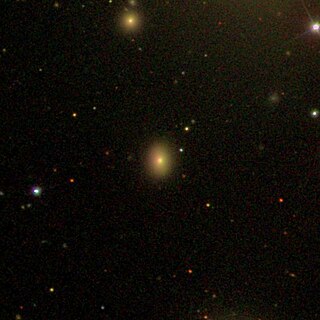
NGC 386 is an elliptical galaxy located in the constellation Pisces. It was discovered on November 4, 1850, by Bindon Stoney. It was described by Dreyer as "considerably faint, small, round." Along with galaxies NGC 375, NGC 379, NGC 382, NGC 383, NGC 384, NGC 385, NGC 387 and NGC 388, NGC 386 forms a galaxy cluster called Arp 331.
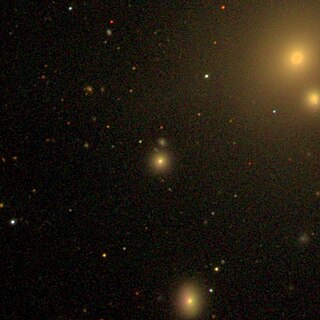
NGC 387 is an elliptical galaxy located in the constellation Pisces. It was discovered on December 10, 1873 by Lawrence Parsons. It was described by Dreyer as "very faint, small, round." Along with galaxies NGC 375, NGC 379, NGC 382, NGC 383, NGC 384, NGC 385, NGC 386 and NGC 388, NGC 387 forms a galaxy cluster called Arp 331.

NGC 388 is an elliptical galaxy located in the constellation Pisces. It was discovered on November 4, 1850, by Bindon Stoney. It was described by Dreyer as "very faint, small, round." Along with galaxies NGC 375, NGC 379, NGC 382, NGC 383, NGC 384, NGC 385, NGC 386 and NGC 387, NGC 388 forms a galaxy cluster called Arp 331.

NGC 391 is an unbarred lenticular galaxy located in the constellation Cetus. It was discovered on January 8, 1853, by George Bond. It was described by Dreyer as "faint, small, mottled but not resolved ."

NGC 397 is a lenticular galaxy located in the constellation Pisces. It was discovered on December 6, 1866 by Robert Ball. It was described by Dreyer as "extremely faint, small, round, very faint star to west."

NGC 874 is a spiral galaxy located in the Cetus constellation. It is estimated to be 572 million light-years away from the Milky Way galaxy and has a diameter of approximately 80,000 light-years. NGC 874 was discovered in 1886 by Frank Muller.





















